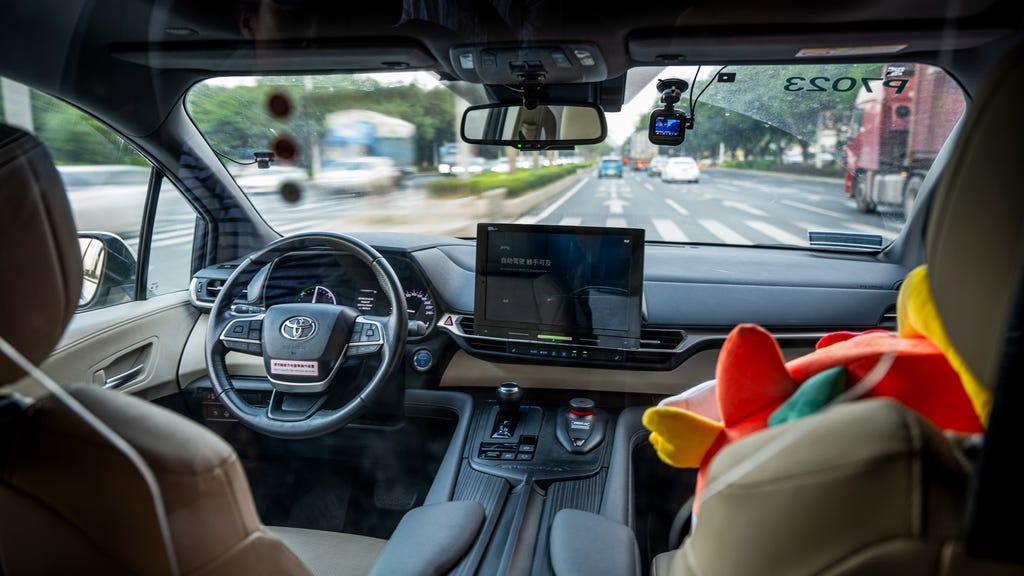The bustling streets of Guangzhou, China, offer a glimpse into the future of transportation. Here, amidst the throngs of traditional taxis and bustling pedestrians, a new breed of vehicle navigates the urban landscape: the driverless taxi. These autonomous vehicles, distinguished by their empty driver’s seats, often accompanied by a whimsical stuffed animal in the passenger seat, represent China’s ambitious foray into the cutting edge of artificial intelligence and automotive technology. This pilot program, actively embraced and championed by the Communist Party, showcases the nation’s dedication to technological advancement and its pursuit of global leadership in innovation. However, while this futuristic vision holds immense potential for revolutionizing urban mobility, it also casts a long shadow of uncertainty and apprehension over the livelihoods of thousands of traditional taxi drivers, who fear displacement and obsolescence in the face of this rapidly evolving technological tide.
The development and deployment of driverless taxis represent a strategic imperative for the Chinese government, aligning with its broader vision of technological self-reliance and dominance. This initiative serves as a potent symbol of national prowess, demonstrating China’s capacity to compete on the global stage in emerging technologies. Moreover, the government sees autonomous vehicles as a key component in addressing the complex challenges of urban congestion, pollution, and traffic safety. The potential for improved efficiency and reduced accidents through the elimination of human error makes driverless technology an attractive solution to the ever-increasing demands of urban transportation systems. The Guangzhou pilot program acts as a crucial testing ground, gathering valuable real-world data and refining the technology before its wider implementation across the nation. This calculated approach allows for iterative improvements and ensures the seamless integration of driverless vehicles into the existing urban fabric.
From a technological perspective, the driverless taxis navigating Guangzhou’s streets represent a sophisticated integration of hardware and software. Equipped with an array of sensors, including lidar, radar, and cameras, these vehicles perceive their environment with remarkable precision. Sophisticated algorithms process the incoming data, allowing the vehicles to map their surroundings, identify obstacles, predict the behavior of other road users, and navigate complex traffic scenarios. The technology also incorporates advanced machine learning capabilities, enabling the vehicles to learn from experience and continuously improve their performance over time. This constant refinement through data analysis and algorithm optimization ensures the system’s adaptability and resilience in the face of unpredictable real-world conditions.
The experience of riding in a driverless taxi is a unique blend of novelty and apprehension. As the vehicle smoothly accelerates and navigates the bustling streets without human intervention, passengers are immersed in a futuristic reality. The absence of a driver creates a sense of both wonder and slight unease, highlighting the profound shift in the traditional relationship between humans and automobiles. The vehicle’s seamless maneuvering and adherence to traffic regulations inspire confidence, while the occasional unexpected maneuver or sudden stop can serve as a stark reminder that the technology is still in its developmental stages. The novelty of the experience draws considerable public attention, with curious onlookers often observing the driverless vehicles as they navigate the city streets.
While the government and technology companies tout the potential benefits of driverless taxis, the human cost of this technological disruption cannot be overlooked. The thousands of taxi drivers in Guangzhou and other cities across China face an uncertain future, as the prospect of widespread adoption of autonomous vehicles threatens their livelihoods. Many drivers express concerns about job displacement and the lack of alternative employment opportunities. The transition to a driverless future raises complex social and economic questions that require careful consideration and proactive measures to mitigate the potential negative impacts on vulnerable populations. The government must address these concerns through retraining programs, social safety nets, and other initiatives to support those whose livelihoods are affected by this technological transformation.
The emergence of driverless taxis in Guangzhou represents a pivotal moment in the evolution of transportation. While the technology holds immense promise for revolutionizing urban mobility and addressing pressing challenges related to congestion and safety, it also presents significant societal implications. The success of this pilot program will not only depend on the technological advancements but also on how effectively the government and industry address the concerns of affected communities. The future of transportation in China, and indeed the world, hinges on finding a balance between embracing innovation and ensuring a just and equitable transition for all. The driverless taxis of Guangzhou offer a compelling glimpse into the future, a future that holds both immense potential and considerable challenges that must be navigated with foresight and compassion.














